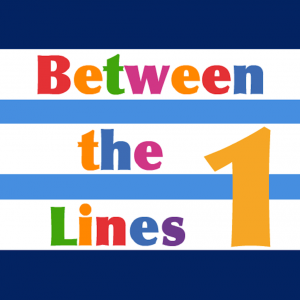 Several years after I started my private speech pathology practice, I began performing comprehensive independent speech and language evaluations (IEEs).
Several years after I started my private speech pathology practice, I began performing comprehensive independent speech and language evaluations (IEEs).
For those of you who may be hearing the term IEE for the first time, an Independent Educational Evaluation is “an evaluation conducted by a qualified examiner who is not employed by the public agency responsible for the education of the child in question.” 34 C.F.R. 300.503. IEE’s can evaluate a broad range of functioning outside of cognitive or academic performance and may include neurological, occupational, speech language, or any other type of evaluations as long as they bear direct impact on the child’s educational performance.
Independent evaluations can be performed for a wide variety of reasons, including but not limited to:
- To determine the student’s present level of functioning
- To determine whether the student presents with hidden, previously undiscovered deficits (e.g., executive function, social communication, etc.)
- To determine whether the student’s educational classification requires a change
- To determine if the student requires additional, previously not provided, related services (e.g., language therapy, etc.) or an increase in related services
- To determine whether a student might benefit from an application of a particular therapy technique or program (e.g, Orton-Gillingham)
- To determine whether a student with a severe impairment (e.g., severe emotional and behavioral disturbances, genetic syndrome, significant intellectual disability, etc.) is a good candidate for an out of district specialized school

Why can’t similar assessments be performed in school settings?
There are several reasons for that.
- “The school district may lack the personnel or expertise to conduct a particular type of evaluation” (Source: Wrightslaw)
- Due to a variety of job-related constraints the school-based personnel may lack adequate time needed to perform the assessment or lack of access to appropriate testing materials needed to assess a particular student.
- Finally, “a school district may seek an IEE to assuage parental concerns about the fairness or accuracy of an evaluation”. (Source: Wrightslaw)
Why are IEE’s Needed?
The answer to that is simple: “To strengthen the role of parents in the educational decision-making process.” According to one Disability Rights site: “Many disagreements between parents and school staff concerning IEP services and placement involve, at some stage, the interpretation of evaluation findings and recommendations. When disagreements occur, the Independent Educational Evaluation (IEE) is one option lawmakers make available to parents, to help answer questions about appropriate special education services and placement“.
Indeed, many of the clients who retain my services also retain the services of educational advocates as well as special education lawyers. Many of them work on determining appropriate level of services as well as an out of district placement for the children with a variety of special education needs. However, one interesting reoccurring phenomenon I’ve noted over the years is that only a small percentage of special education lawyers, educational advocates, and even parents believed that children with autism spectrum disorders, genetic syndromes, social pragmatic deficits, emotional disturbances, or reading disabilities required a comprehensive language evaluation/reevaluation prior to determining an appropriate out of district placement or an in-district change of service provision.
So today I would like to make a case, in favor of comprehensive independent language evaluations being a routine component of every special education dispute involving a child with impaired academic performance. I will do so through the illustration of past case scenarios that clearly show that comprehensive independent language evaluations do matter, even when it doesn’t look like they may be needed.

Case A: “He is just a weak student”.
Several years ago I was contacted by a parent of a 12 year old boy, who was concerned with his son’s continuously failing academic performance. The child had not qualified for an IEP but was receiving 504 plan in school setting and was reported to significantly struggle due to continuous increase of academic demands with each passing school year. An in-district language evaluation had been preformed several years prior. It showed that the student’s general language abilities were in the low average range of functioning due to which he did not qualify for speech language services in school setting. However, based on the review of available records it very quickly became apparent that many of the academic areas in which the student struggled (e.g., reading comprehension, social pragmatic ability, critical thinking skills, etc) were simply not assessed by the general language testing. I had suggested to the parent a comprehensive language evaluation and explained to him on what grounds I was recommending this course of action. That comprehensive 4 hour assessment broken into several testing sessions revealed that the student presented with severe receptive, expressive, problem solving and social pragmatic language deficits, as well as moderate executive function deficits, which required therapeutic intervention.
Prior to that assessment the parent, reinforced by the feedback from his child’s educational staff believed his son to be an unmotivated student who failed to apply himself in school setting. However, after the completion of that assessment, the parent clearly understood that it wasn’t his child’s lack of motivation which was impeding his academic performance but rather a true learning disability was making it very difficult for his son to learn without the necessary related services and support. Several months after the appropriate related services were made available to the child in school setting on the basis of the performed IEE, the parent reported significant progress in his child academic performance.

Case B: “She’s just not learning because of her behavior, so there’s nothing we can do”.
This case involved a six year old girl who presented with a severe speech – language disorder and behavioral deficits in school setting secondary to an intellectual disability of an unspecified origin.
In contrast to Case A scenario, this child had received a variety of assessments and therapies since a very early age; however, her parents were becoming significantly concerned regarding her regression of academic functioning in school setting and felt that a more specialized out of district program with a focus on multiple disabilities would be better suitable to her needs. Unfortunately the school disagreed with them and believed that she could be successfully educated in an in-district setting (despite evidence to the contrary). Interestingly, an in-depth comprehensive speech language assessment had never been performed on this child because her functioning was considered to be “too low” for such an assessment.
Comprehensive assessment of this little girl’s abilities revealed that via an application of a variety of behavioral management techniques (of non-ABA origin), and highly structured language input, she was indeed capable of significantly better performance then she had exhibited in school setting. It stood to reason that if she were placed in a specialized school setting composed of educational professionals who were trained in dealing with her complex behavioral and communication needs, her performance would continue to steadily improve. Indeed, six months following a transfer in schools her parents reported a “drastic” change pertaining to a significant reduction in challenging behavioral manifestations as well as significant increase in her linguistic output.

Case C: “Your child can only learn so much because of his genetic syndrome”.
This case scenario does not technically involve just one child but rather three different male students between 9 and 11 years of age with several ‘common’ genetic syndromes: Down, Fragile X, and Klinefelter. All three were different ages, came from completely different school districts, and were seen by me in different calendar years.
However, all three boys had one thing in common, because of their genetic syndromes, which were marked by varying degrees of intellectual disability as well as speech language weaknesses, their parents were collectively told that there could be very little done for them with regards to expanding their expressive language as well as literacy development.
Similarly to the above scenarios, none of the children had undergone comprehensive language testing to determine their strengths, weaknesses, and learning styles. Comprehensive assessment of each student revealed that each had the potential to improve their expressive abilities to speak in compound and complex sentences. Dynamic assessment of literacy also revealed that it was possible to teach each of them how to read.
Following the respective assessments, some of these students had became my private clients, while others’s parents have periodically written to me, detailing their children’s successes over the years. Each parent had conveyed to me how “life-changing”a comprehensive IEE was to their child.

Case D: “Their behavior is just out of control”
The final case scenario I would like to discuss today involves several students with an educational classification of “Emotionally Disturbed” (pg 71). Those of you who are familiar with my blog and my work know that my main area of specialty is working with school age students with psychiatric impairments and emotional behavioral disturbances. There are a number of reasons why I work with this challenging pediatric population. One very important reason is that these students continue to be grossly underserved in school setting. Over the years I have written a variety of articles and blog posts citing a number of research studies, which found that a significant number of students with psychiatric impairments and emotional behavioral disturbances present with undiagnosed linguistic impairments (especially in the area of social communication), which adversely impact their school-based performance.
Here, we are not talking about two or three students rather we’re talking about the numbers in the double digits of students with psychiatric impairments and emotional disturbances, who did not receive appropriate therapies in their respective school settings.
The majority of these students were divided into two distinct categories. In the first category, students began to manifest moderate-to-severe speech language deficits from a very early age. They were classified in preschool and began receiving speech language therapy. However by early elementary age their general language abilities were found to be within the average range of functioning and their language therapies were discontinued. Unfortunately since general language testing does not assess all categories of linguistic functioning such as critical thinking, executive functions, social communication etc., these students continued to present with hidden linguistic impairments, which continued to adversely impact their behavior.
Students in the second category also began displaying emotional and behavioral challenges from a very early age. However, in contrast to the students in the first category the initial language testing found their general language abilities to be within the average range of functioning. As a result these students never received any language-based therapies and similar to the students in the first category, their hidden linguistic impairments continued to adversely impact their behavior.
Students in both categories ended up following a very similar pattern of behavior. Their behavioral challenges in the school continued to escalate. These were followed by a series of suspensions, out of district placements, myriad of psychiatric and neuropsychological evaluations, until many were placed on home instruction. The one vital element missing from all of these students’ case records were comprehensive language evaluations with an emphasis on assessing their critical thinking, executive functions and social communication abilities. Their worsening patterns of functioning were viewed as “severe misbehaving” without anyone suspecting that their hidden language deficits were a huge contributing factor to their maladaptive behaviors in school setting.

Conclusion:
So there you have it! As promised, I’ve used four vastly different scenarios that show you the importance of comprehensive language evaluations in situations where it was not so readily apparent that they were needed. I hope that parents and professionals alike will find this post helpful in reconsidering the need for comprehensive independent evaluations for students presenting with impaired academic performance.
 In my social pragmatic language groups I target a wide variety of social communication goals for children with varying levels and degrees of impairment with a focus on improving their social pragmatic language competence. In the past I have written blog posts on a variety of social pragmatic language therapy topics, including strategies for
In my social pragmatic language groups I target a wide variety of social communication goals for children with varying levels and degrees of impairment with a focus on improving their social pragmatic language competence. In the past I have written blog posts on a variety of social pragmatic language therapy topics, including strategies for 

 Our ability to recognize our own and other people’s emotions, distinguish between and correctly identify different feelings, as well as use that information to guide our thinking and behavior is called Emotional Intelligence (EI) (Salovey, et al, 2008).
Our ability to recognize our own and other people’s emotions, distinguish between and correctly identify different feelings, as well as use that information to guide our thinking and behavior is called Emotional Intelligence (EI) (Salovey, et al, 2008).



 Graduation time is rapidly approaching and many graduate speech language pathology students are getting ready to begin their first days in the workforce. When it comes to juggling caseloads and managing schedules, time is money and efficiency is the key to success. Consequently, a few years ago I created SLP Efficiency Bundles™, which are materials highly useful for Graduate SLPs working with pediatric clients. These materials are organized by areas of focus for efficient and effective screening, assessment, and treatment of speech and language disorders.
Graduation time is rapidly approaching and many graduate speech language pathology students are getting ready to begin their first days in the workforce. When it comes to juggling caseloads and managing schedules, time is money and efficiency is the key to success. Consequently, a few years ago I created SLP Efficiency Bundles™, which are materials highly useful for Graduate SLPs working with pediatric clients. These materials are organized by areas of focus for efficient and effective screening, assessment, and treatment of speech and language disorders. 


 Those of you who follow my blog know that I absolutely adore the “Between the Lines” app series by Hamaguchi apps, which focuses on targeting aspects of social language including tone of voice and non-verbal body language, perspective taking as well as idiom interpretation. I have already reviewed
Those of you who follow my blog know that I absolutely adore the “Between the Lines” app series by Hamaguchi apps, which focuses on targeting aspects of social language including tone of voice and non-verbal body language, perspective taking as well as idiom interpretation. I have already reviewed  I enjoyed
I enjoyed  In today’s guest post, Natalie Romanchukevich advises readers on how to create opportunities to expand children’s spontaneous communication skills.
In today’s guest post, Natalie Romanchukevich advises readers on how to create opportunities to expand children’s spontaneous communication skills.





 It’s DAY 27 of my Birthday Month Giveaways and I am raffling off a giveaway by
It’s DAY 27 of my Birthday Month Giveaways and I am raffling off a giveaway by